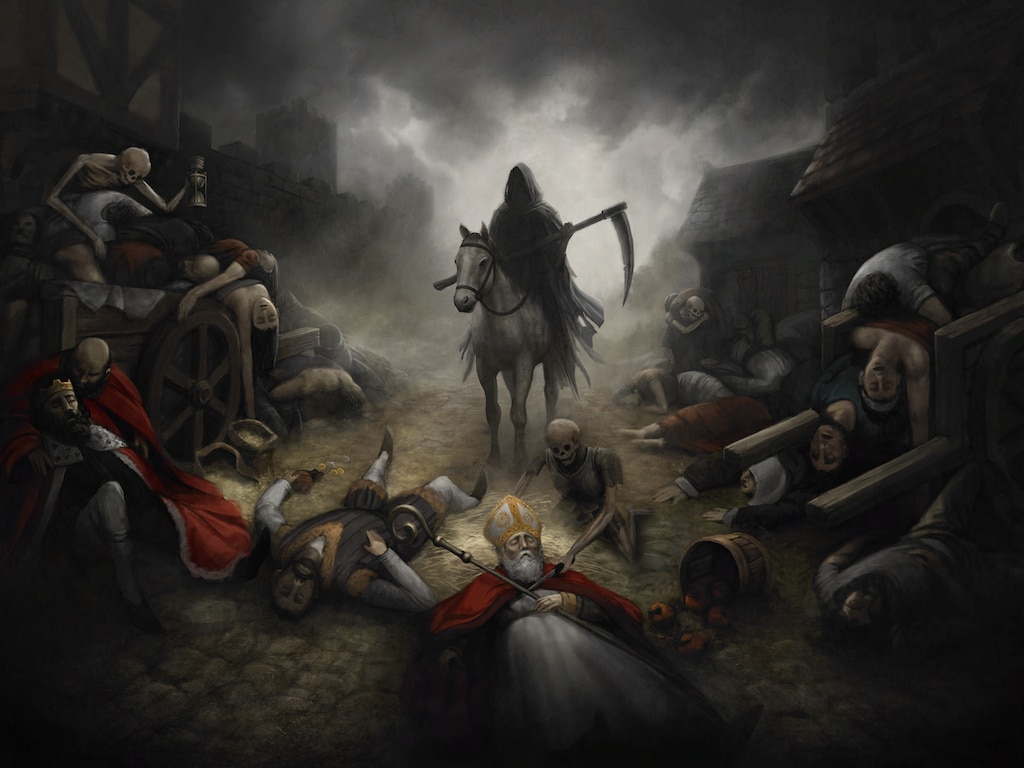Chapter 7: An Enlightened Voyage
Philosopher Français-Marie Arouet “Voltaire”, painting in 1724 by Nicolas de Largillière
The royal couple arrived at France and King Christian VII was keenly interested in the French philosophy of the time, and the French Baron C.H. von Gleichen arranged an audience for 18 of the leading philosophers and scientists of the time. He met them in his lodging with his wife Caroline Mathilde playing as host on 20 November 1768 and began the audience by greeting each one and comment on his works or reputation. Then he took another round and spook extra with Denis Diderot and Jean le Rond d’Alembert, among others.
Diderot and d’Alembert were famous for their encyclopaedia work and had created a movement to promoting the advancement of science and secular thought and supported tolerance, rationality, and open-mindedness of the enlightenment. King Christian VII promised to support the publication of the encyclopaedia and bought several copies to his personal library. During the one-month stay in France, he visited several times theatres, local attractions and leading producers of porcelain, tapestries and crafts of the time. On 3 December, King Christian VII visited three academies; Académie française, Académie des inscriptions et belles lettres and Académie des sciences.
Soon the royal couple continued their voyage and arrived at Ferney in France near Geneva to visit the philosopher Voltaire who had been one of King Christian VII’s role model. During the stay, the philosopher and King Christian VIII touched on many subjects such as Christianity, Confucianism and slavery. At one point, King Christian VIII’s second role model, Jean-Jacques Rousseau, came by to join the debate and touched on human nature, education and child rearing.
Voltaire supported a form of enlightened absolutism with traits of meritocracy and believed it was the only real way for society to advance. He praised Confucian rationalism as an alternative to Christian dogma, argued that the Chinese had perfected moral science and advocating an economic and political system modelled after that of Chinese.
As Queen Caroline Mathilde came from a land, where it was governed by a constitutional monarchy with a parliamentary system, she quickly discovered how powerful she had become in a land where all power lay within the king. Since Christian VII was saner thank to the educating method developed by Rousseau, she found she had an intellect connection with her husband and created a closer relationship with him and formed a partnership.
Of this reason she managed to join the European voyage and had been lucky enough to meet Rousseau, her own role model in child rearing. Rousseau came with pointers which went the opposite way to almost all traditional upbringing methods and among other advocated the mothers should breastfeed their own children. He gave the young Queen his book “Emile, or On Education” but stressed her not to take the teaching from the book literally and the children needed to be under supervision. He said to the Queen, his goal with the book ‘Emile’ was not to learn how to raise children to become good princes but to bring about the natural human whom the court life had destroyed with its empty phrases and superficial finery.
The royal couple left France with new revisionary ideas. Christian VIII with version about create a meritocracy state with him in top and Caroline Mathilde with a version for a new education model for the Danish children. They returned home in early 1769 with a light pregnant Queen.
A great happiness and a great for grief arrived at Denmark with the birth of a healthy girl born to the royal couple on 7. August 1769 and a smallpox epidemic in autumn 1769. The pale rider claimed the life of the infant Crown Prince Frederik on 20 May 1770.
The dead of Crown Prince Frederik hit the royal couple hard and only their daughter Louise Augusta kept them together. King Christian VII fell into a deep depression, but her wife managed to pull him up of the abyss before his madness could take over him. His second most famous painting known as ‘all are equal’ was from this period. The painting had a dark background with gloomy houses and several peasants, bishop, merchant and the king lay in front lifeless surrounding by skeletons and the pale rider in the middle.
‘All are equal’ by Christian VII, painted in 1770
The king declared all humans were equal in the eye of the god no matter yours status or wealth and both Serfdom and slavery within the Danish-Norwegian realm shall be ended. King Christian VII issued the ‘Regulation on the Negro Trade’ on 16. March 1771, which prohibited the trade of slaves and the bill passed 17 days later. Denmark-Norway thus became the first country in Europe to prohibit trade in slaves.
Although a ban on trafficking in slaves was decided in 1771, the ban was not to enter into force until 1782 on the recommendation of the finance minister and businessman Henrich Carl von Schimmelmann who said it was important to provide sufficient labour on the plantations before the regulation could be passed. The slaves were now to provide better living conditions and were allowed to live together in marriage-like conditions, thus creating a class of self-recruiting slaves in the Danish colonies. The regulation was therefor adopted with a transitional period of ten years.
The agricultural commission promised to present its report on the Danish-Norwegian agriculture and how to improve it next year.
By Royal Resolution, the Royal Commission on the Land Settlement, popularly known as the “Grand Land Commission” was set up in 1769 to investigate and propose several improvement in the right and duties of the peasants in Denmark. The commission consisted of representatives of the privy council, landowners, legal experts and military. For several years, the commission had been a central place for the agricultural debate.
The commission reached to a conclusion and present its report to King Christian VII and the privy council in 1772 with a proposal to the reorganisation of the Danish agriculture in four areas:
· Abolition of the village community
· Improving the condition of peasantry and serfdom
· Creation of a large rural middle-class
With the abolition of the village community, the field structure was to be restructured by merge smaller farms into large ones so each peasants would have one total piece of land rather a number of scattered plots. In this way, each individual peasants became independent and could make decisions about cultivation of the land himself according to the market price.
As it had been noted, the serfdom and stavnsbånd was a poor solution and need to be ended. The commission believed, if they end the stavnsbånd and an abolition of serfdom would lead the peasant and hirelings to find estate with good conditions and the landowner therefor had to offer favourable conditions for retaining and attracting labour. An increasing competition over the labour force would lead to an increasing in production.
The third aspect of the proposal land reform deals with the transition from serfdom to freemen. One of the goals were to create a free peasantry, which itself owned the land. The landowner would distribute their property and sell the land to the freeman leading to a large rural middle-class
The suggested land reforms were approved by King Christian VII and most of the privy council, and the reforms were passed on 20 April 1772 with a gradual abolition of the village community and transit from serfdom to freemen on fifty years.
[Note1] Rousseau's upbringing method is not that bad and is in fact what our modern pedagogy is based on. The problem with the method was in that Struensee toke his teaching literally in the most extreme sense with almost fatal consequences for the Crown Prince.
[Note2] A smallpox epidemic did happen but without the present of the infamous dictator J.F. Struensee who had inoculate the crown prince against the disease, leading to his dead. I believe it was the only good thing, Struensee had done to Denmark.








